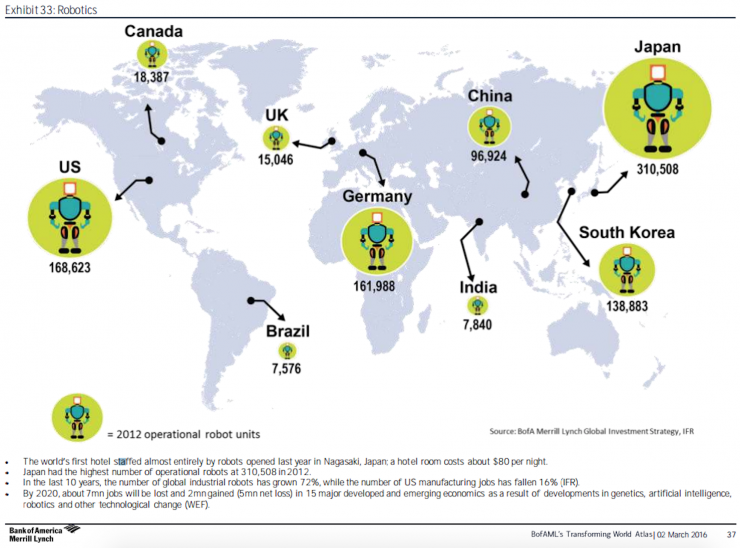 Not long ago, so-called robots were giants in cages on the production lines of automobiles. Today, social robots are the focus of research in the most advanced university laboratories.
Not long ago, so-called robots were giants in cages on the production lines of automobiles. Today, social robots are the focus of research in the most advanced university laboratories.
But in the past few years, social robots have finally matured. One night, the market began to be filled with similar products. Some of them are distinctive humanoid machines.
The prosperity of social robots
Soft silver Nao, Pepper and Remeo robots have a head and two arms. Their designs are very personal, cleverly avoiding the so-called "Horror Valley Theory" in the human-computer similarity of the appearance of the very high, like people will not make people horrified.
Other robots are not so humanized. For example, Buddy of Blue Frog Robotics put a cartoon face on the screen and the wheel can slide quickly. Jibo is even more clever about awakening humanity. Their fixed base and head can be turned and jogged.

What is a social robot? Why are they different?
Prof. Breazeal, the inventor of Jibo, describes social robots in a groundbreaking essay "Towards Social Robots." "They can interact with people in ways that are entertaining, engaging, and human-like. Â
The most striking feature in the interaction between people and social robots is emotion. It can be achieved through a dialogue-based interface. For example, Amazon strengthens the virtual assistant Alexa in the Echo device so that it can understand emotions. China's Turing Robot is even more advanced, saying that Turing Robot OS can understand emotions.
Later, Dr. Brezeal's research showed that adding non-spoken programs to body posture can have a profound effect on increasing the interaction, trust, and confidence of people and robots. In her 2010 TED talk, she said that people interact with dieting robots longer than they did with the same computer training courses. The ethereal sound coming from the mobile device or the cylinder of the kitchen sink can interact on the table.
Is this a solution or a trick?
So, social robots can have a profound effect. Even if an interface can understand emotions, it can only work when it connects people with the methods of solving problems. There is a problem in this. What can these robots do, and what problems can they solve?
The fact is that no one can turn it into a cool element and then make a killer app to dominate the market at a whirlwind speed.
Let us examine Softbank's robot product line. Nao and Romeo are research platforms designed specifically for technicians, not ordinary people. Pepper is the first consumer-oriented solution dedicated to exchanging traditional thinking and end-user interaction. In many retail stores, it plays the role of a salesperson. In the Japanese family, it is being put into use as a companion robot.
But what kind of role did Pepper play in such a retail store? A salesperson can greet the consumer, help them find what they want and make money. Pepper can only greet consumers. So is this a solution to a real demand, or is it just a trick?
Home robots have a long way to go
Because Pepper has been emotionally intelligent, some people think that they can already play the role of a home partner. So, let's take a look at who in the home environment needs to be accompanied.
Needless to say, children and the elderly. Children will have fun with the robot. But robots can't replace adults. Every parent with a child and a child caregiver understand this truth. The old man does need to stay with him. But what they yearn for is to spend time with the people they love, not to spend all day with the machine. Everyone who takes care of the elderly understands this truth. Â
It is commendable that we have seen on the Softbank robot's homepage that robots are only supporting actors and they will not replace humans. However, we do not know whether current social robots will ease the burden on caregivers. The efficiency of nursing robots will improve in time, but it is still a long way to go.
Finally, home service robots still have some tasks to be completed - cleaning the house and cooking. Hey, the heavy housework dumps a few streets of current induction, navigation, and control technologies. We are still several years away from witnessing the birth of a truly practical household helper robot. The best robots that current technology can provide us are Roombahuo and AI driven bar tending machines.
As a long-term zealot, I can’t wait to see the popularity of robots in the home environment. Now, the user interface is much more advanced than what robots can do. Only when the back-end technology catches up with the front, we can witness the birth of a truly practical home robot.
Via weforum
Incremental Encoder,6Mm Solid Shaft Encoder,Hollow Rotary Encoder,Elevator Door Encoder
Jilin Lander Intelligent Technology Co., Ltd , https://www.jilinlandertech.com
